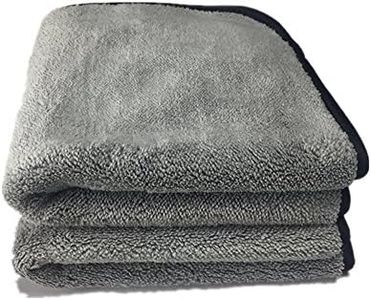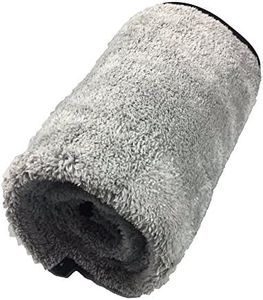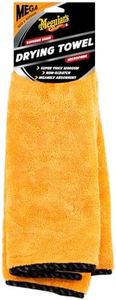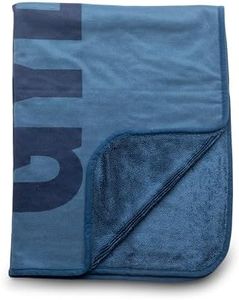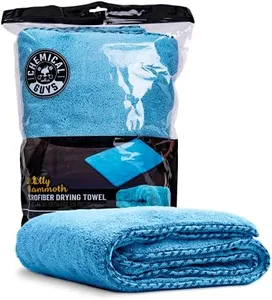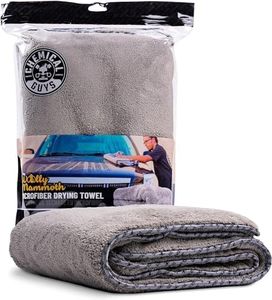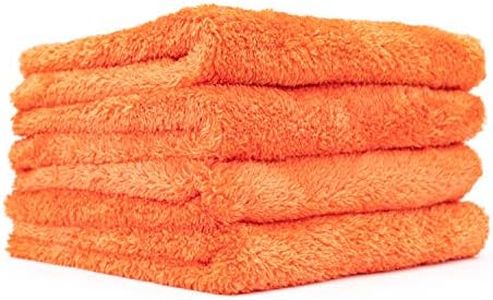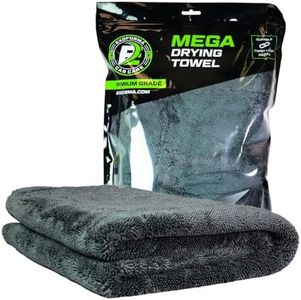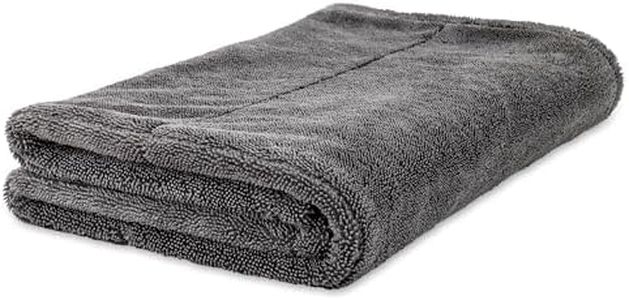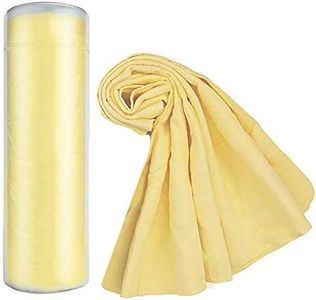We Use CookiesWe use cookies to enhance the security, performance,
functionality and for analytical and promotional activities. By continuing to browse this site you
are agreeing to our privacy policy
10 Best Car Drying Towels
From leading brands and best sellers available on the web.Buying Guide for the Best Car Drying Towels
When it comes to drying your car after a wash, the towel you use can make a big difference in both results and efficiency. The aim is to dry the surface quickly and safely without leaving behind water spots, scratches, or lint. Not all towels are created equal, so understanding the key differences will help you find the one that best suits your needs.MaterialThe material a car-drying towel is made from plays a major role in its absorbency and gentleness on your car's paint. The most common materials are microfiber, cotton, and chamois. Microfiber is especially popular due to its softness, ability to trap dirt, and high water absorption. Cotton towels are less absorbent and can sometimes leave lint, while chamois can work well but require maintenance to stay soft. If you want the safest and easiest option, microfiber is ideal for most users because it’s gentle on finishes and highly effective at soaking up water.
SizeThe size of the towel affects how efficiently you can dry your car. Small towels are easier to handle but may require more wringing out or multiple towels to finish the job. Medium to large towels allow you to cover more area quickly and often dry an entire car in one go, but can be heavy when saturated. Consider the type and size of your car; for a compact vehicle, a smaller towel may work fine, while for SUVs or trucks, a larger towel may save time and effort.
GSM (Grams per Square Meter)GSM is a measure of how dense and thick the towel is, which relates to its absorbency and softness. Low GSM towels (below 300) are lightweight and dry quickly but don't hold as much water. Mid-range GSM (300-600) offers a good balance of absorbency and easy handling, suitable for general drying. High GSM towels (600 and above) are plush, absorb a lot of water, and are very gentle on paint, but they can become heavy and take longer to dry. Choose a GSM based on whether you want a quick, light towel or a more luxurious and absorbent one—high GSM is generally best for delicate finishes or larger jobs.
Edge TypeThe edges of the towel can affect whether it might scratch your car. Towels with stitched or rough edges have a higher chance of causing micro-scratches, while silk-banded or edgeless designs are safest. If paint protection is your priority, opt for towels with soft, rounded, or edgeless borders to minimize any risk of damage.
Weave TypeWeave refers to how the fibers are arranged—common weaves include waffle, twisted loop, and plush. Waffle weaves are thin with a patterned surface that catches and removes water quickly, making them great for speedy drying. Twisted loop weaves hold large amounts of water and offer fast, efficient drying especially on big vehicles. Plush weaves are very soft and gentle, perfect for finishing or sensitive finishes but may require more passes. Pick the weave type based on how fast you want to dry and your car's paint sensitivity—twisted loop for efficiency, plush for delicacy, waffle for versatility.
Drying Method PreferenceYour method of drying—whether you pat the surface or wipe it—can influence the right towel for you. If you prefer pat drying (gently placing and lifting the towel), thicker, plusher towels are best since they absorb without needing to rub. If you like to wipe, a lighter, more maneuverable towel like waffle weave might be better. Consider your usual technique and pick a towel type that complements it for the safest and quickest results.
